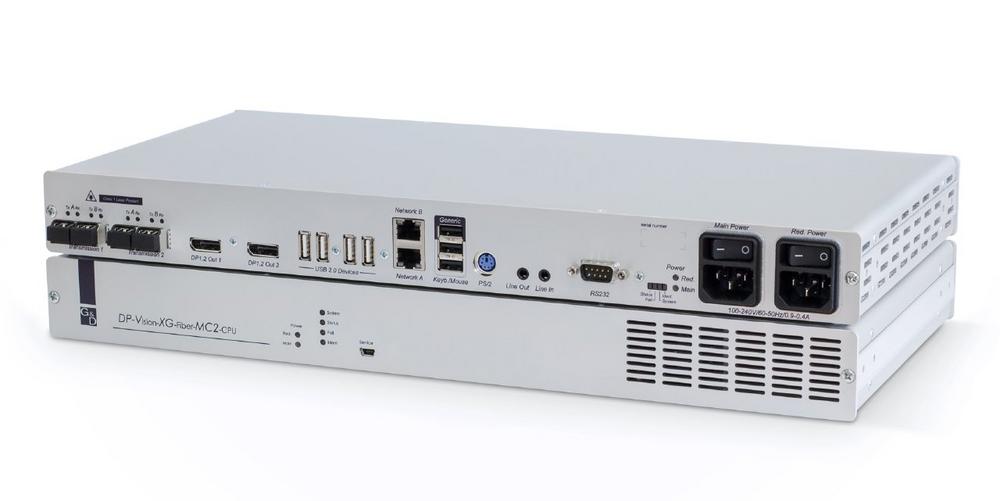Already well-stablished in the ATC sector, KVM systems from Guntermann und Drunck help remove powerful and noisy computers from the control room and place them in an air-conditioned technical room. It is important to avoid heat and noise emissions in ATC rooms. KVM systems build a bridge to the remotely stored equipment. Nevertheless, the computers can still be operated in real time, as if they were still placed at the workplace. The German manufacturer will be presenting such highly reliable KVM systems for mission-critical applications in the ATC sector at this year’s ATCA Annual, from October 15-18, 2017, booth 507, National Harbor, MD, USA. The KVM systems made in Germany form an absolutely reliable bridge between the server and the ATC room. But which aspects are important for selecting such systems, and what do you have to consider before purchasing KVM equipment tailored to your air traffic control room?
Compressed or uncompressed – the core issue of video transmission
Often, the video quality is one of the most crucial factors when choosing KVM equipment. Air traffic controllers must be able to rely on the fact that what they see on their screens is actually a real-time display – without latency and without impairing the image quality. Thanks to G&D’s KVM technology, it is possible to bridge large distances between the computers in the server room and the ATC room so that air traffic controllers can operate their computers in real time. However, the question of whether to use compressed or uncompressed video transmission must be answered individually. The decision for one of these systems depends on many factors. Uncompressing systems require a high bandwidth in order to transparently transmit the incoming, high-resolution video signals of the computer without any loss to the monitor. A high bandwidth, in turn, requires a more powerful, more expensive system. The results of such high-quality systems are absolutely reliable, because the controllers are able to see every single pixel transmitted.
Uncompressing systems such as the DP1.2-VisionXG transmit the information pixel-perfect, without any latency and lossless. Even high-resolution 4K and 8K video signals can be transmitted over long distances at a full refresh rate of 60 Hz. The KVM extender is the first and only KVM system in the world that can extend 8K video signals uncompressed and transparent over distances of up to 10,000 m. The device consists of a computer and a user module and is equipped with up to four video channels. The DP1.2-VisionXG uses optical fibers for the dedicated transmission of signals. Thus, the system provides enough bandwidth for uncompressed, high-resolution DisplayPort 1.2 video signals, keyboard/mouse, RS232, USB2.0, and audio.
Compressing KVM systems and their place in the ATC industry
Compressing systems can also ensure very high video quality, but offer many other advantages, too. By compressing the video signals, the systems require a lower bandwidth and allow for more cost-effective components. Compared to uncompressed transmission via fiber optics, the classic transmission via CAT cables offers significant advantages regarding costs. An aspect that can be considered for each individual project with regards to the budget. However, CAT cables allow less bandwidth and require compression. The KVM extender DP-Vision1.2 is ready for both requirements and extends computer signals either via fiber optics up to 10,000 m or via CAT cables up to 140 m.
G&D solve any requirements caused by lower bandwidths with their improved, in-house HDIP compression technology in the latest development stage, Level 3. This compression mode allows the loss-free transmission of video signals with a resolution of 4K at 60Hz. The KVM Extender DP1.2-Vision is fully compatible with G&D’s digital matrix switches. Therefore, 4K resolutions can be switched even through a KVM matrix. The compression method HDIP Level 3 provides pixel-perfect images, so that the systems require less bandwidth for transmitting signals, but still deliver optimal video quality and latency-free operation. Therefore, KVM systems from G&D are an optimal fit for the ATC sector.
Another decisive advantage of compressing systems is that computer signals can be processed much better when compressed. This makes it easier to switch and distribute computers and consoles in larger matrix installations, enabling distributed, two-way access and switching scenarios.
Many air navigation services around the world already rely on G&D systems. Some ANSPs apply compressing systems while other air traffic controls trust in G&D’s transparent systems. Therefore, the question of whether a compressing or uncompressing system is the better choice must be answered individually. The answer depends primarily on the specific requirements and application parameters of the respective control room. At this year’s ATCA Annual from October 15-18, 2017, G&D’s KVM experts will be advising trade fair visitors on the best possible solution for ATC applications and helping ANSPs to design their individual IT structures in the best possible way.
Guntermann & Drunck GmbH
Obere Leimbach 9
57074 Siegen
Telefon: +49 (271) 23872-0
Telefax: +49 (271) 23872-120
http://www.gdsys.de
